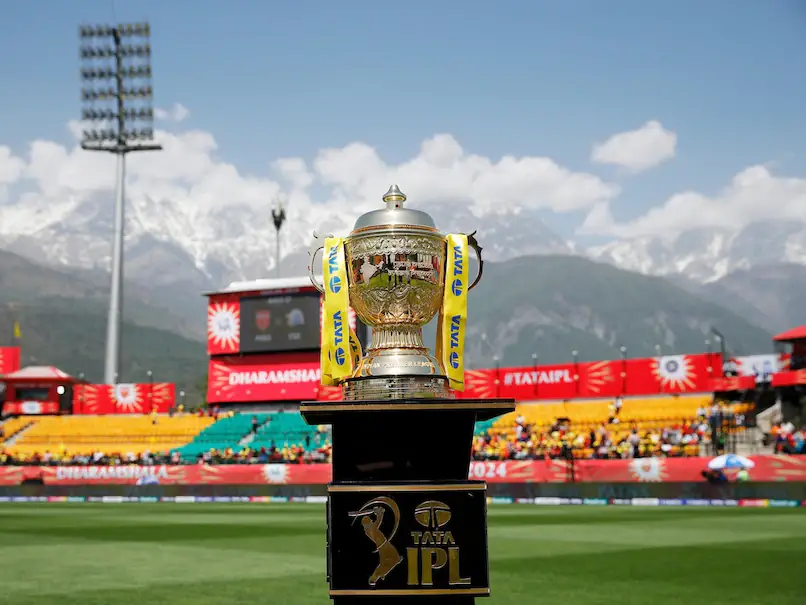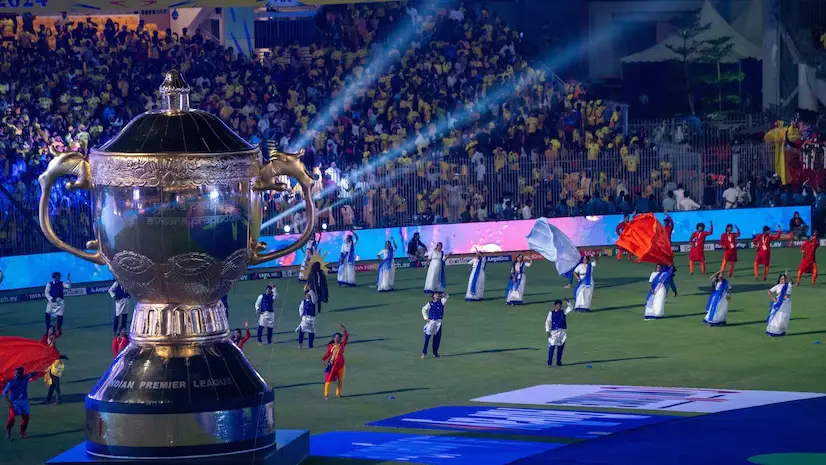Inside the IPL Economy: How India’s Cricket League Spins Billions Every Year
The Indian Premier League (IPL) has evolved from a bold experiment into a global sporting and economic powerhouse. Launched in 2008 by the Board of Control for Cricket in India (BCCI), the league has transformed the landscape of professional cricket. Now in its second decade, the IPL has not only redefined how the sport is played and consumed but also how it’s monetized—making billions each season through a complex, thriving ecosystem of media rights, sponsorships, fan engagement, and franchise profits.
Key Table of IPL Economy
| Category | Statistic / Figure |
|---|---|
| League Inception | 2008 |
| Media Rights Deal (2023–2027) | ₹48,390 crore (Star Sports & Viacom18) |
| Ad Rate (10-second slot) | ₹15 lakh (during peak matches) |
| Title Sponsorship (Tata Group) | ₹670 crore (2022–2023, 2-year deal) |
| Team Salary Cap (2023) | ₹95 crore per franchise |
| Top Player Salary | ₹15–20 crore per season |
| New Franchise Prices (2021) | Lucknow Super Giants: ₹7,090 crore Gujarat Titans: ₹5,625 crore |
| Franchise Revenue Share | ₹250–300 crore per season (average) |
| Franchise Operating Costs | ₹150–200 crore per season (average) |
| Franchise Fee to BCCI | 20% of team’s total revenue |
| Chennai Super Kings Valuation | ₹8,000+ crore |
| Mumbai Indians Valuation | ₹8,000+ crore |
| Broadcast Countries | Over 100 |
| Annual IPL Revenue (2023) | ₹1.8 billion (~₹14,850 crore) |
| Projected 2025 Revenue | ₹20 billion (~$2.75 billion) |
| Overseas Sales Target (2025) | ₹10 billion (~$1.38 billion) |
A Billion-Dollar Juggernaut Born in India

What began as a vision to blend entertainment with cricket has grown into a global brand valued at tens of billions of dollars. With franchises selling out stadiums, players earning more than ever before, and broadcasters battling for exclusive rights, the IPL’s financial engine shows no signs of slowing down.
At its heart, the IPL’s success lies in its multi-stream revenue model—built upon a perfect mix of sports, celebrity culture, and business acumen. The league’s ability to generate profits while also offering entertainment to millions makes it one of the most lucrative sports leagues in the world today.
The Media Rights Boom: A Billion-Dollar Bonanza

A significant portion of the IPL’s annual income stems from media rights. The BCCI hit a record-breaking deal in 2022 when it sold television and digital broadcasting rights for the 2023–2027 cycle. Disney Star secured the TV rights, while Viacom18 took over digital streaming. Combined, the deals fetched a staggering ₹48,390 crore (around $6.2 billion), making it one of the most expensive broadcasting agreements in sports history.
That works out to over ₹118 crore per match—higher than per-match earnings of even the English Premier League and NFL games in some cases. Broadcasters pay these huge sums banking on massive returns through ad revenues and subscriptions. A 10-second advertisement during marquee matches like the playoffs or finals can cost advertisers upwards of ₹15 lakh.
With digital platforms seeing explosive growth and mobile consumption rising in India and globally, the IPL’s media value is only projected to climb higher in the coming years.
Sponsorships Fueling the Fire
If broadcasting is the backbone of IPL’s revenue, sponsorship is the lifeblood that keeps the league flowing. Every year, IPL signs multimillion-rupee deals with title sponsors, associate sponsors, and official partners.
For instance, Tata Group’s two-year title sponsorship deal starting in 2022 was worth ₹670 crore. Add to that dozens of associate sponsors—ranging from fintech and mobile brands to beverage and tech companies—and you have a robust sponsorship pipeline pumping cash into the central revenue pool.
Franchises, too, have their own array of sponsors. Brand logos on jerseys, caps, helmets, and practice gear are just the beginning. Strategic partnerships with tech startups, banks, food delivery platforms, and even crypto firms add another layer of monetization.
The sponsorship model ensures that both the BCCI and individual franchises enjoy a steady flow of capital throughout the season.
Ticket Sales and Match-Day Revenue

Despite the rapid rise of digital viewership, in-person attendance remains a solid revenue stream. Ticket sales, particularly in cricket-obsessed cities like Mumbai, Chennai, and Bangalore, generate crores in revenue for home teams during the season.
Although stadiums are managed by local cricket associations, franchises typically receive a substantial portion of gate receipts. The split can vary, but for franchises like Chennai Super Kings (CSK) or Mumbai Indians (MI), where matches routinely sell out, the returns from ticketing can be in the tens of crores over a single season.
Additionally, match-day revenue includes hospitality, merchandise, and premium seating packages—further padding franchise profits.
Merchandising: The Next Growth Engine

While merchandising is still a growing segment in the Indian sports economy, the IPL is rapidly catching up. Franchises have ramped up investments in branding, leading to the sale of official team jerseys, caps, flags, and other collectibles.
Teams now partner with e-commerce platforms and retail chains to expand reach. CSK, MI, and RCB lead the pack, offering everything from co-branded sneakers to action figures. For young fans, owning team merchandise has become a symbol of identity—something the franchises are leveraging aggressively.
While the merchandising revenues aren’t as large as in European football leagues yet, the market potential is huge. As brand loyalty deepens and e-commerce grows, merchandising could become a major pillar in the IPL’s commercial structure.
Local Business Collaborations and Licensing
Franchises are also becoming mini-conglomerates in themselves. Beyond the core two-month tournament window, teams engage in business partnerships, licensing deals, and even run cricket academies under their brand names.
Some franchises have even entered the events and entertainment space, licensing their brand for sports events, local tournaments, and fan meetups. These activities help franchises maintain visibility during the off-season and expand revenue generation beyond match days.
The Cost of Building a Championship Team
The glamorous world of IPL is not without its hefty expenses. Running a team in the IPL involves significant costs—from franchise fees and player salaries to logistics and marketing.
Each franchise originally paid a one-time fee to the BCCI to enter the league. When the IPL added two new teams in 2021—Lucknow Super Giants and Gujarat Titans—the bidding wars made headlines. The RPSG Group shelled out ₹7,090 crore for Lucknow, while CVC Capital paid ₹5,625 crore for Gujarat. These figures reflected the booming valuation of the IPL brand.
Player salaries are a major expense. The league’s salary cap for each team in 2023 was ₹95 crore, and top players like Virat Kohli, Rohit Sharma, and Ben Stokes command upwards of ₹15–20 crore per season. Add to that staff salaries (coaches, physiotherapists, analysts), travel, accommodation, and training expenses, and the cost per season can quickly rise to ₹150–200 crore for a franchise.
Franchises also pay the BCCI a franchise fee—typically 20% of their income—in exchange for access to central revenues and operational support.
Profit Margins and Break-Even Points
Despite the sky-high costs, most franchises are either profitable or close to breaking even. Thanks to rising media rights and sponsorship deals, a well-run team can expect revenues of ₹250–300 crore per season.
For example, CSK and MI, with their massive fan bases and brand recognition, often attract premium sponsors and top-tier partnerships. Their brand value has exceeded ₹8,000 crore each, according to several market analyses.
Even mid-tier franchises are seeing positive signs. As the gap between income and expenditure narrows, the IPL’s economic model becomes more sustainable. In the long run, the appreciation in brand value alone makes IPL franchises attractive investments.
IPL’s Global Footprint and Brand Value
The IPL is now a global export. Matches are broadcast in over 100 countries, and players from Australia, England, South Africa, and the Caribbean bring international audiences. This global presence boosts ad revenue and opens the door for cross-border partnerships.
It also means that IPL teams are now building international fan bases. Some have even considered international exhibition matches and digital fan clubs to capitalize on their global reach.
The tournament’s digital footprint is equally impressive. With millions watching on mobile phones and engaging on social media, digital impressions are through the roof. Teams invest heavily in content creation, fan engagement, and influencer marketing during and beyond the tournament window.
Digital and Streaming Are the Future
Digital streaming is the future of IPL. Platforms like JioCinema, which streamed IPL matches for free in 2023, attracted over 500 million viewers. With high-speed mobile data becoming more accessible, digital viewership is surpassing traditional TV.
This shift allows teams and sponsors to directly engage with fans through personalized content, polls, fantasy leagues, and in-app promotions. The data collected helps refine marketing strategies and target audiences more effectively.
Franchises are leveraging social media not only to build hype but to stay connected with fans all year. The continuous engagement has created a 12-month marketing cycle, breaking the mold of seasonal fanfare.
The IPL Effect on Indian Sports Economy
The success of IPL has had a ripple effect on Indian sports. It has become the benchmark model for other leagues like the Indian Super League (football), Pro Kabaddi League, and Premier Badminton League.
The economic boost extends to sectors like tourism, advertising, hospitality, and even apparel. The two-month tournament creates thousands of jobs—from ground staff and marketing executives to content creators and hotel workers.
Cities hosting IPL matches see a spike in business activity, and brands experience heightened visibility during the season. It’s no exaggeration to say that IPL has become a key contributor to the Indian economy during the April-May window each year.
Conclusion: More Than Just Cricket
The Indian Premier League is more than just a cricket tournament. It’s a billion-dollar ecosystem that blends sports, business, media, and culture into a high-octane spectacle. From mega broadcast deals and sold-out stadiums to global streaming and merchandise, every aspect of the IPL is fine-tuned for maximum impact.
As it continues to grow—both in value and influence—the IPL stands as a shining example of how India has mastered the art of sports commercialization. Whether you’re a die-hard fan, an investor, or just a curious observer, one thing is clear: the IPL is here to stay, and it’s only getting bigger.

